The Office of Legacy Management works closely with Native American tribes and Alaska Natives that are partners in our commitment to long-term monitoring and surveillance. We routinely collaborate on site inspections, environmental monitoring, document review, natural resources management, community outreach, STEM education, and more.
In January, LM representatives attended the science, technology, engineering and math STEM Fest 2023 at the Chota Conference Center in Tahlequah, Oklahoma, on the Cherokee Nation.
In February, the Navajo Nation Outreach team presented at the “Diné People Are the Future” STEM event at Leupp Elementary School in Leupp, Arizona.
In March, LM Deputy Director Scott Whiteford toured LM’s Navajo Nation Community Outreach Network Office in Window Rock, Arizona, and visited the Church Rock, New Mexico, Disposal Site, which is scheduled to transfer to LM for long-term stewardship in 2030.
In March, Director Melendez and Deputy Director Whiteford met with the Pueblo of Acoma Tribal Council to update them on the Bluewater, New Mexico, Disposal Site. Melendez presented a plaque of appreciation to Pueblo of Acoma Governor Randall Vicente. The U.S. Nuclear Regulatory Commission and New Mexico Environment Department also participated at the request of the pueblo.
In April, LM co-sponsored a STEM-sation event with Miss Navajo Nation Valentina Clitso, Navajo Transitional Energy Company, Diné College Land Grant Office, Navajo Abandoned Mine Lands Reclamation Department, Arizona Public Service, and BHP at Monument Valley High School in Kayenta, Arizona.
In April, LM and the Navajo Nation Public Affairs team participated in the Diné College Land Grant Office STEM Fest in Tsaile, Arizona.
In May, LM met with Hopi Tribe Department of Natural Resources representatives for a tour of the Moab and Green River Disposal Sites in Utah and the Atomic Legacy Cabin, Grand Junction Disposal and Processing Site, and Los Colonias Park in Colorado.
In May, LM’s Navajo Nation Public Affairs team participated in a Navajo Community Outreach Network Uranium 101 community workshop delivered in English and Navajo in Kayenta, Arizona. The Community Outreach Network includes federal agencies and Navajo Nation departments and programs that educate and inform Navajo communities about the risks uranium mines pose and how to protect people from exposure.
In September, LM gave a presentation to Pueblo of Acoma leadership during the Pueblo of Acoma Tribal Council fall meeting. LM reported on its Bluewater, New Mexico, Disposal Site and proposed future projects with the pueblo.
In October, LM attended the Annual American Indian Science and Engineering Society National Conference in Spokane, Washington, and the Alaska Federation of Natives Annual Convention in Anchorage, Alaska.
Also, in October, representatives from LM and LMSP attended the 75th Annual Navajo Nation Fair in Window Rock, Arizona — the largest American Indian fair in the southwest United States. More than 100 people stopped by the booth to learn more about uranium mine safety, ongoing site projects, and LM’s Defense-Related Uranium Mines program.
On Oct. 5, LM Defense-Related Uranium Mines team members engaged with the community at the Northern Navajo Fair in Shiprock, New Mexico.
On Oct. 26, LM attended the second annual “Diné People Are the Future” STEAM fair at Leupp Elementary School in Leupp, Arizona.
On Nov. 7-8, the Hopi Tribe hosted the joint Navajo-Hopi-DOE triannual meeting in Sedona, Arizona. The parties discussed the history, background, environmental remedies, institutional controls, and current updates from the four disposal and processing sites on the Navajo Nation.
On Nov. 9, LM participated in a Navajo Nation STEM-sation event at Tuba City High School in Tuba City, Arizona. More than 300 students participated in the event. LM and LM Support Partner staff showed students the importance of studying groundwater as it relates to LM’s work at four former uranium processing sites on the Navajo Nation.
On Nov. 16, LM visited Haak’u Community Academy in Pueblo of Acoma, New Mexico, for STEM with LM activities.
On Dec. 5-7, LM met with members from the Hopi Tribe, the Navajo Nation, and the Bureau of Indian Affairs Western Regional Office to discuss the Tuba City, Arizona, Disposal Site tour.
Ongoing Collaboration
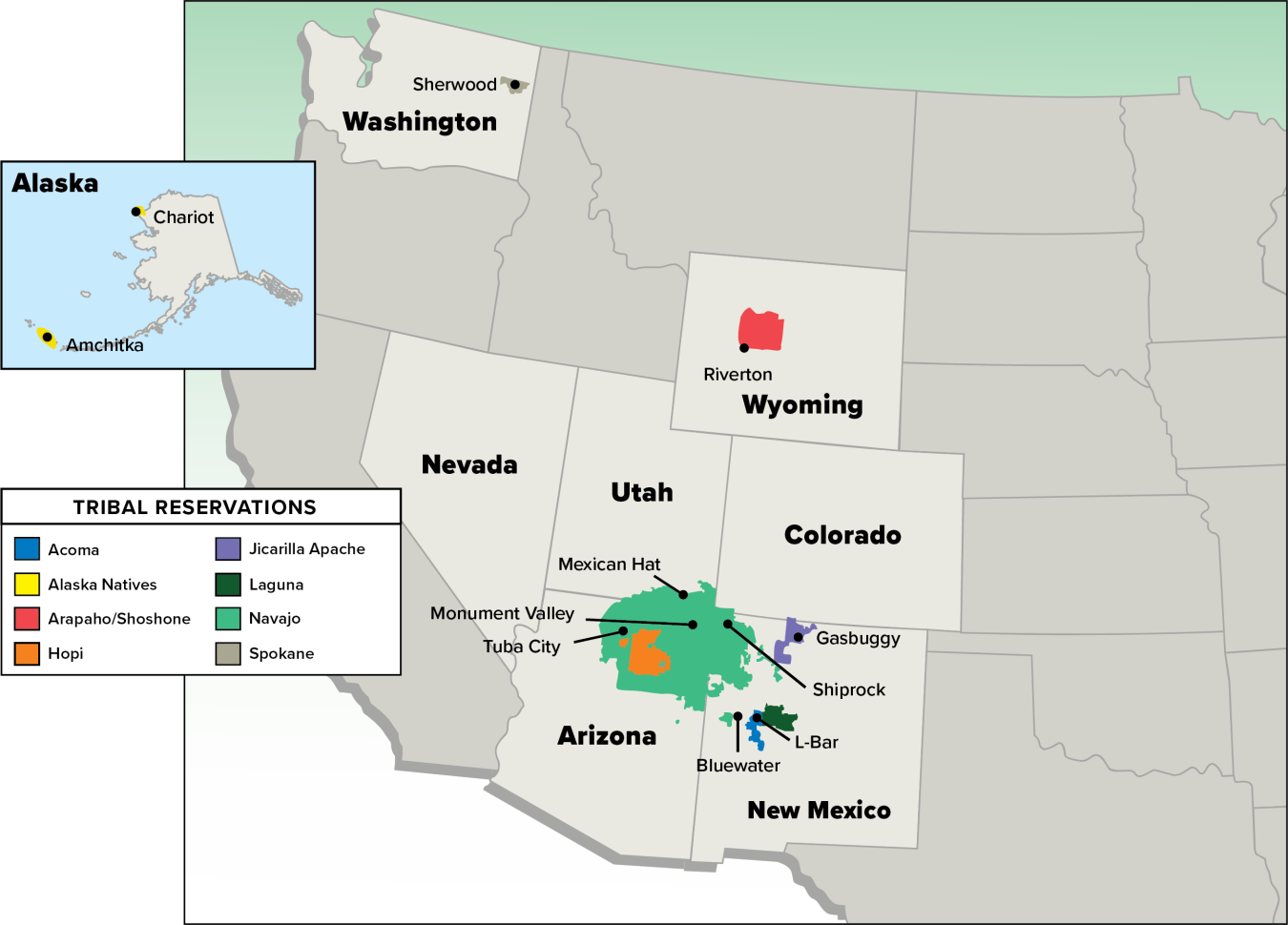
The Acoma and Laguna Pueblos are southeast of LM’s Bluewater, New Mexico, Disposal Site in Cibola County, near the town of Grants.
Uranium-ore processing at the site in the 1950s through 1970s produced radioactive tailings. Water in the tailings slurry seeped into the underlying alluvial and bedrock aquifers, contaminating the groundwater. Site reclamation began in 1991, and by 1995, all mill tailings, contaminated soils, demolished mill structures, and contaminated vicinity property materials were encapsulated in on-site disposal areas.
LM’s groundwater monitoring demonstrates that contaminated groundwater has migrated off the Bluewater site; this migration occurred during the past milling activities. Evaluation of groundwater data for the site and downgradient of the site indicates that no drinking water supply wells have contaminant concentrations above drinking water standards and that the site-derived contamination does not pose a current or future risk for community water systems in the Grants-Bluewater valley. LM continues to evaluate off-site contamination to ensure safety of human health and the environment.
LM collaborates with both pueblos, and tribal representatives of both have toured the site for an overview of the disposal cell, site hydrogeology, and groundwater-contamination concerns.
Bluewater, New Mexico, Disposal Site.
LM oversees two sites in Alaska, one on Amchitka Island at the western end of the Aleutian chain, the other at Chariot in northwest Alaska. LM collaborates closely with Alaska Natives to provide long-term stewardship of both sites.
Amchitka
Currently uninhabited, Amchitka Island is an ancestral home of the Aleuts, whose nearest community today lies about 170 miles to the east on Adak Island. The Aleuts occupied Amchitka intermittently, beginning about 4,000 years ago through the late 1700s. At the beginning of World War II, Amchitka contained only an abandoned Russian fishing village.
From 1965 to 1971, the U.S. government conducted three underground nuclear tests on Amchitka. In 2001, the U.S. Department of Energy (DOE) was assigned responsibility for properties related to these tests, referred to collectively as the Amchitka, Alaska, Site. The site is outside the island’s designated wilderness area and is not near potential Alaskan Native tribal claims.
LM performs terrestrial sampling on the island and marine sampling in the ocean waters surrounding Amchitka and Adak islands.
In addition, LM participates annually in a focus session at the Alaska Forum on the Environment to discuss long-term surveillance and monitoring activities at the Amchitka site. Other participants include the Alaska Department of Environmental Conservation, U.S. Fish and Wildlife Service, and University of Alaska Fairbanks.
Amchitka, Alaska, Site.
Chariot
LM’s Chariot, Alaska, Site is located in the Ogoturuk Valley in the Cape Thompson region of northwest Alaska, bounded on the southwest by the Chukchi Sea. The closest populated areas are the Inupiaq villages of Point Hope, 32 miles northwest of the site, and Kivalina, 41 miles southeast.
In 1962, the U.S. Geological Survey conducted a radioactive tracer experiment in test plots at the Chariot site. Soil contaminated with radioactive elements from an experimental nuclear detonation at the Nevada Test Site (now called the Nevada National Security Site) was brought to the Chariot site for use in the test plots.
In consultation with area residents and the Alaska Department of Environmental Conservation, DOE decided in 1993 that removal of all remaining radiologically contaminated material at the site was the most effective means of assuring residents that the site presented no risk to human health or the environment. The State of Alaska issued a clean-closure status of the site following the 1993 remediation, and clean-closure with institutional controls following a 2014 cleanup of diesel-contaminated soils from former boreholes at the site.
LM collaborates with Alaska Natives for long-term management of the Chariot site.
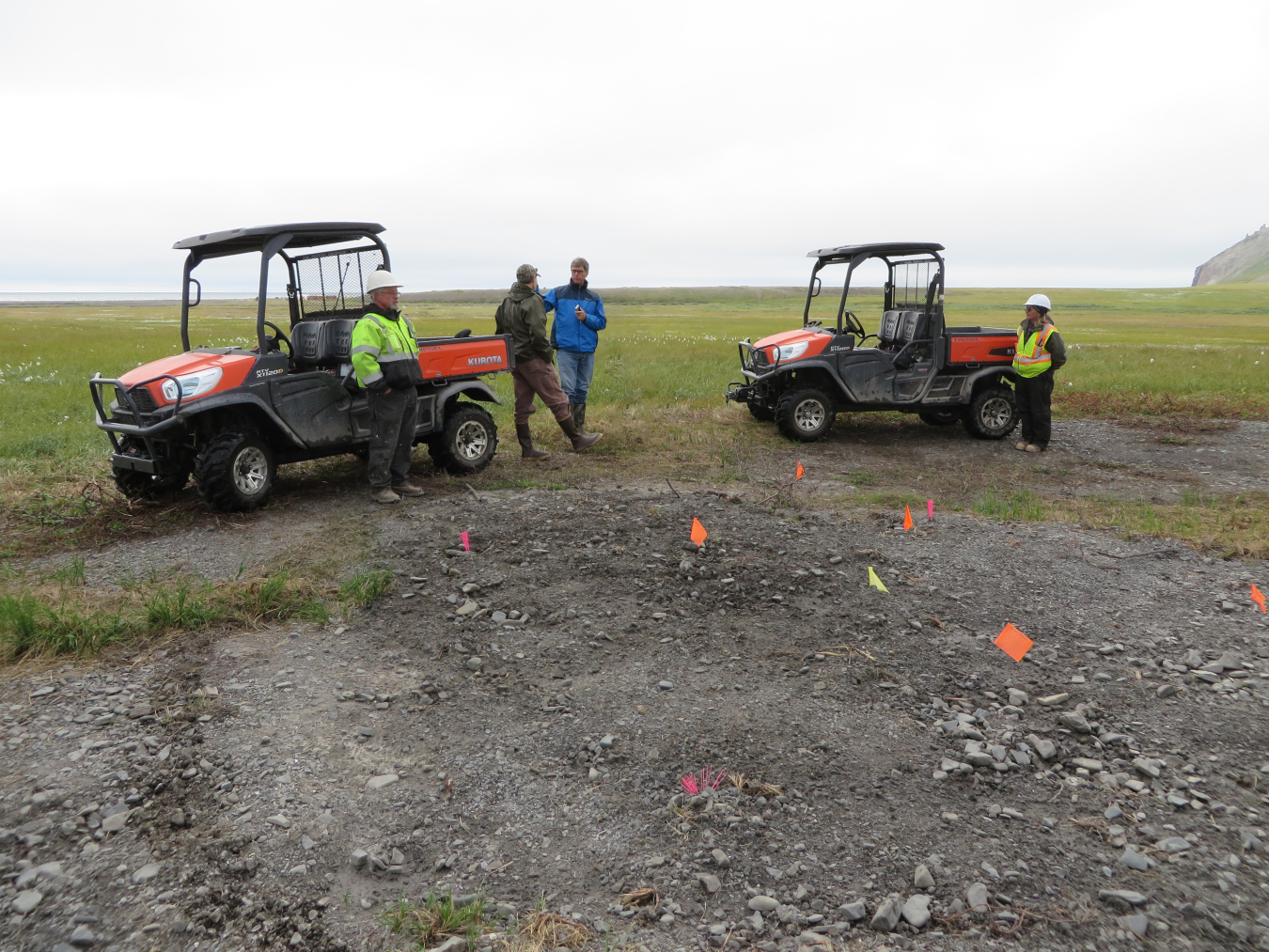
Chariot, Alaska, Site.
LM’s Gasbuggy site, located in Carson National Forest in northwestern New Mexico, borders the Jicarilla Apache Nation.
Project Gasbuggy was part of the U.S. Atomic Energy Commission (AEC) Plowshare Program, which sought to find peaceful uses for nuclear power. In 1967, AEC detonated a nuclear device at 4,227 feet below the ground surface to fracture the rock and increase natural gas flow. Most of the radionuclides from that detonation were contained in the solidified molten rock in the cavity and no radiation was released at the surface. AEC decommissioned and demobilized the site in 1978, and the structures and equipment used for the test were decontaminated and removed. Cleanup was complete by 2004. Today, the U.S. Forest Service has returned the land to its pre-Gasbuggy uses of recreation and livestock grazing.
EPA began monitoring groundwater and surface water annually at Gasbuggy beginning in 1972. The sampling locations — located in Carson National Forest, the Jicarilla Apache Reservation, and on private property — consisted of springs, ponds, surface water drainages, ranch wells, and livestock watering wells near the site. Since 2008, DOE has overseen this hydrologic monitoring. In 2009, annual monitoring was reduced to once every five years since no Gasbuggy-related contamination had been detected.
If new oil and gas wells are drilled near Gasbuggy, LM samples the gas to ensure no contaminants from the nuclear test are detected.
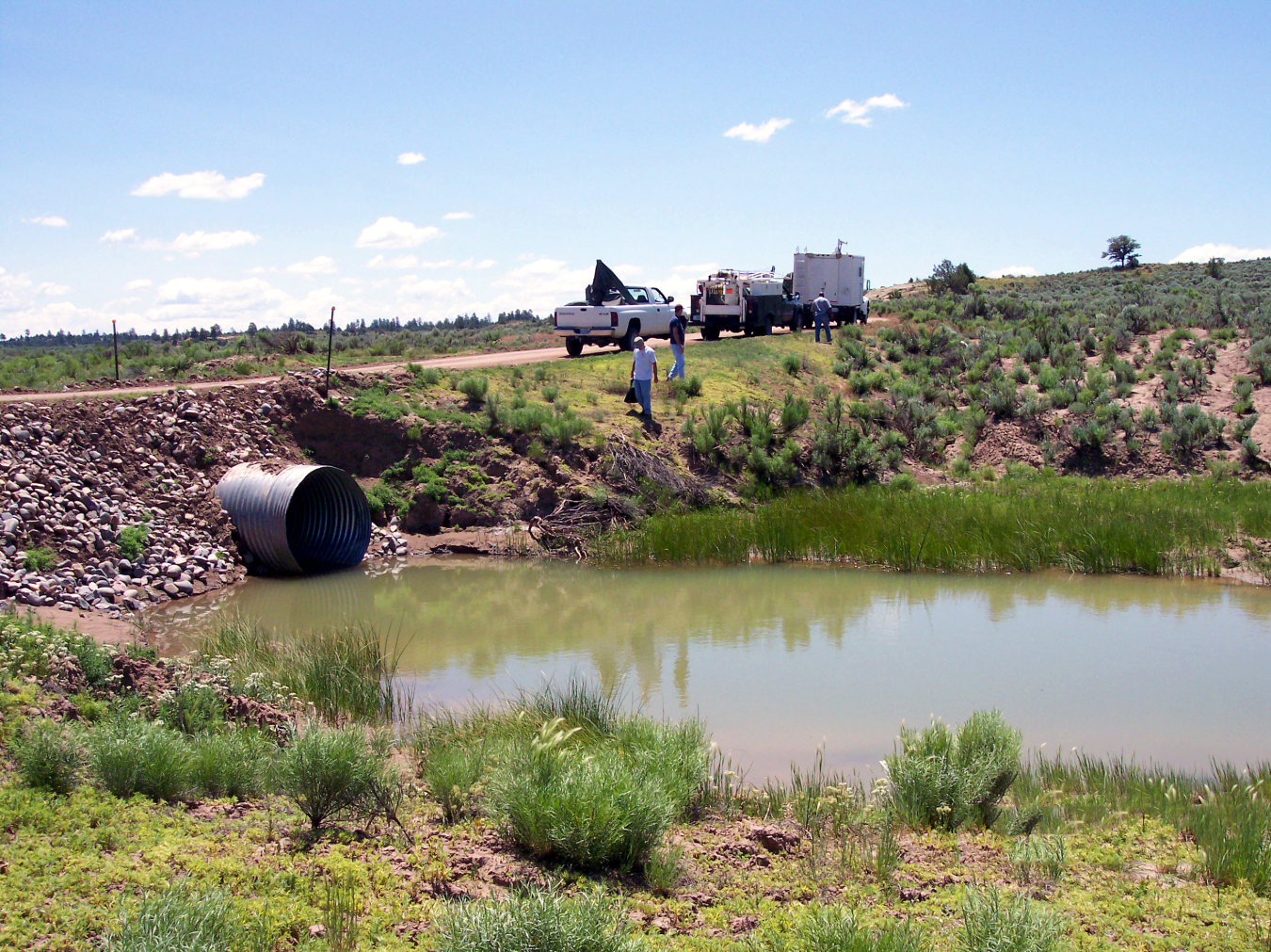
Gasbuggy, New Mexico, Site.
LM provides long-term stewardship to four former uranium mill sites located on the Navajo Nation: Shiprock, New Mexico; Tuba City, Arizona; Mexican Hat, Utah; and Monument Valley, Utah, sites. The Tuba City site is near Hopi tribal lands.
Through a cooperative agreement, LM coordinates closely with the Navajo Nation Abandoned Mine Lands/Uranium Mill Tailings Remedial Action (AML/UMTRA) Department and Hopi Office of Mining and Mineral Resources to inform tribal government leadership and communities about LM activities. With the agreement, LM provides opportunities for ongoing, two-way communication regarding site inspections, document review, and community outreach initiatives. LM actively seeks, considers, and responds to the views of its tribal stakeholders, to provide input in LM’s decision-making process.
Outreach Efforts
As part of its outreach efforts, LM attends the Navajo Nation’s yearly tribal fairs and other community events to share information. LM also provides in-person and written updates to Chapter House leadership and elected officials. LM engages with the community and strengthens tribal and federal partnerships for protecting human health and the environment.
LM is committed to supporting science, technology, engineering, and math (STEM) education in tribal communities. STEM with LM brings to life the awe-inspiring and world-changing advancements and events of the nuclear age, subsequent cleanup, and ecological transformations of LM sites. Educational outreach events with local schools introduce students to topics such as radon, radiation, and the legacy of uranium mining and milling. STEM with LM scientists and engineers actively support science education at the Navajo Nation’s high school and colleges by teaching, presenting seminars, and mentoring students in fieldwork activities. LM serves as a committee member alongside tribal and Navajo Nation corporations to organize multiple STEM events throughout high schools on the Navajo Nation each year. LM attends the American Indian Science and Engineering Society annual conference and actively participates in the career fair and STEM event day.
Community Outreach Network
In 2007, Congress issued a directive for multiple federal agencies and various Navajo agencies to create a Five-Year Plan (2008-2013) to address uranium contamination within the Navajo Nation. The federal agencies involved in this effort include the U.S. Department of Energy (DOE), U.S. Environmental Protection Agency (EPA), U.S. Nuclear Regulatory Commission, U.S. Department of Health and Human Services, and U.S. Department of the Interior. The tribal entities include the Office of the Navajo Nation President and Vice President, Navajo Nation AML/UMTRA Department, Navajo Nation Department of Health, Navajo Nation Environmental Protection Agency, and Navajo Nation Department of Justice.
In 2014, the same federal collaboration updated the Five-Year Plan (2014-2018) to build on the work completed in the first five years and adjusted the document based on information gained during this time. EPA, the lead agency on the project, published the 10-Year Plan (2019-2029) was published in February 2021. It builds on the work of the two previous Five-Year Plans and identifies the next steps in addressing the human health and environmental risks associated with the legacy of uranium mining on the Navajo Nation.
The Navajo Nation Outreach Office in Window Rock, Arizona, is focused on coordinating and supporting the multi-agency effort through community outreach, joint agency and tribal planning, and information sharing. The outreach office is staffed by three full time employees and is open Monday through Friday. Staff engage in one-on-one outreach within the four former uranium processing mill site communities, Navajo Nation fairs and STEM events through out the Navajo Nation and the Hopi reservation. The Outreach Offices houses a public use computer and printer from the U.S. Environmental Protection Agency for community members to access the Abandoned Uranium Mine (AUM) documents.
More information:
- Navajo Nation and Hopi Reservation Uranium Mill Tailings Radiation Control Act Sites Communications and Outreach Plan (July 2021)
- Working with the Navajo Nation and the Hopi Tribe Fact Sheet
- Navajo Nation Community Outreach Network Office, Window Rock, Arizona
- Resource List 2022: Uranium and Radiation on the Navajo Nation
- Mexican Hat, Utah, Disposal Site
- Monument Valley, Arizona, Processing Site
- Shiprock, New Mexico, Disposal Site
- Tuba City, Arizona, Disposal Site
The Riverton, Wyoming, Processing Site is in Fremont County within the boundaries of the Wind River Indian Reservation (Northern Arapaho and Eastern Shoshone Tribes).
The site is the location of a former uranium- and vanadium-ore processing mill that operated from 1958 to 1963. These milling operations produced radioactive tailings, along with uranium, radium, and thorium contamination in soils and construction debris. DOE completed surface remediation of the Riverton site in 1989.
The past milling operations at the Riverton site resulted in surface and groundwater contamination. A perpetual deed restriction for the former mill site property restricts well drilling and land development. DOE funded an alternate drinking water supply system in 1998 to provide potable water to residents within a specified boundary around the site. Tribal ordinance places restrictions on well installation, prohibits surface impoundments, and authorizes access to inspect and sample new wells within this boundary.
In 2017, LM finalized a cooperative agreement with the Northern Arapaho Tribe to collaborate on an environmental monitoring program at the site and facilitate outreach to area residents and other stakeholders.
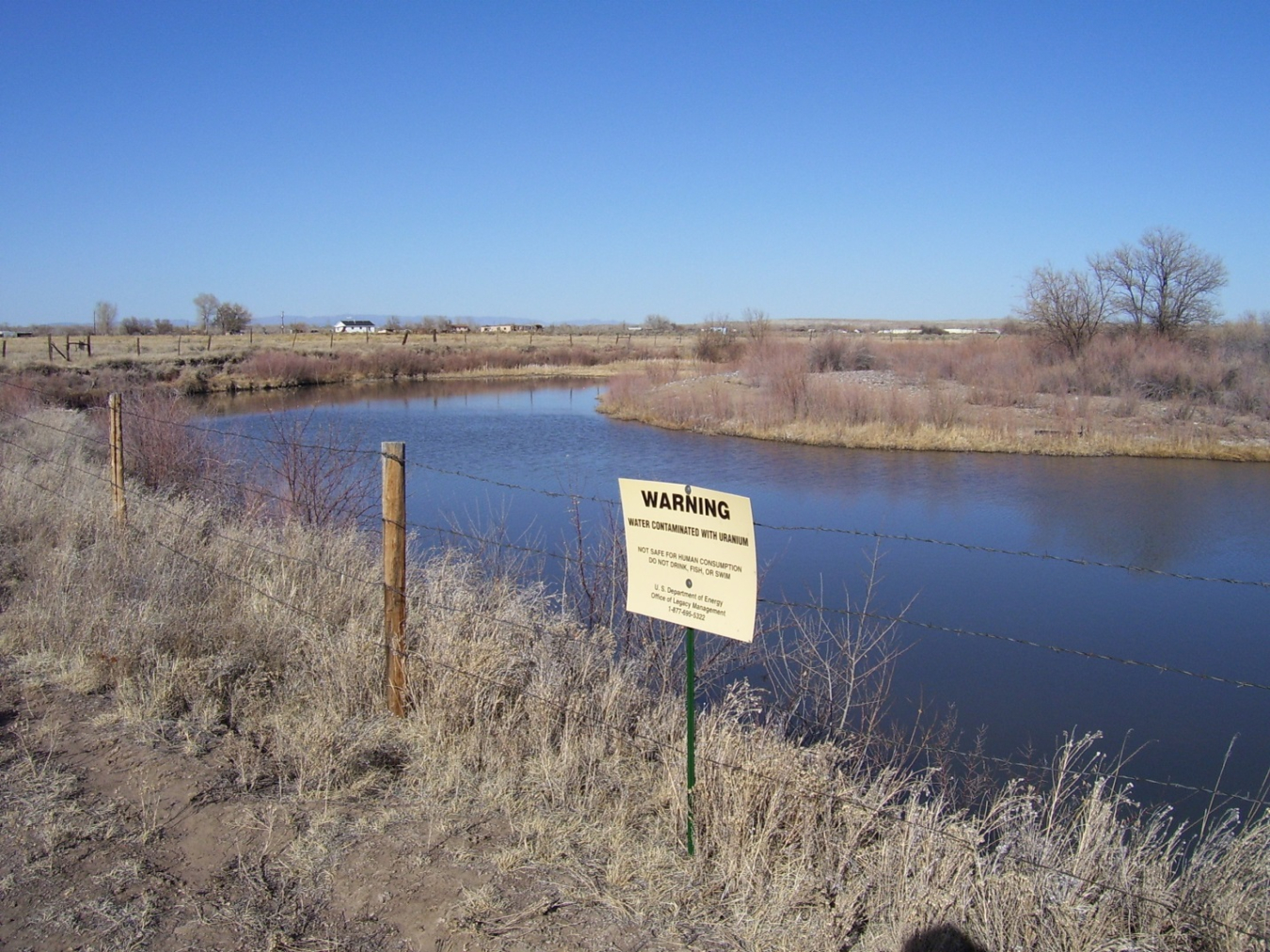
Riverton, Wyoming, Processing Site.
LM’s Sherwood site, located about 35 miles northwest of Spokane, Washington, lies within the Spokane Indian Reservation.
Milling operations began in 1978, when Western Nuclear used an acid-leach process to extract uranium from ore hauled from an open pit mine a half mile from the mill. The operations produced radioactive mill tailings. Along with contaminated mill site soils, buildings, and debris, these tailings were encapsulated in an engineered disposal cell constructed east of the former mill site.
Following completion and approval of the remediation by the Washington State Department of Health, the site was transferred to the Office of Legacy Management in 2001 for long-term surveillance and management.
LM conducts annual groundwater monitoring at the site and shares results with the Spokane Tribe. No contamination has been detected in groundwater downgradient of the disposal cell. Tribal representatives collaborate with LM on annual site inspections, noxious weed control, and management of forest resources.
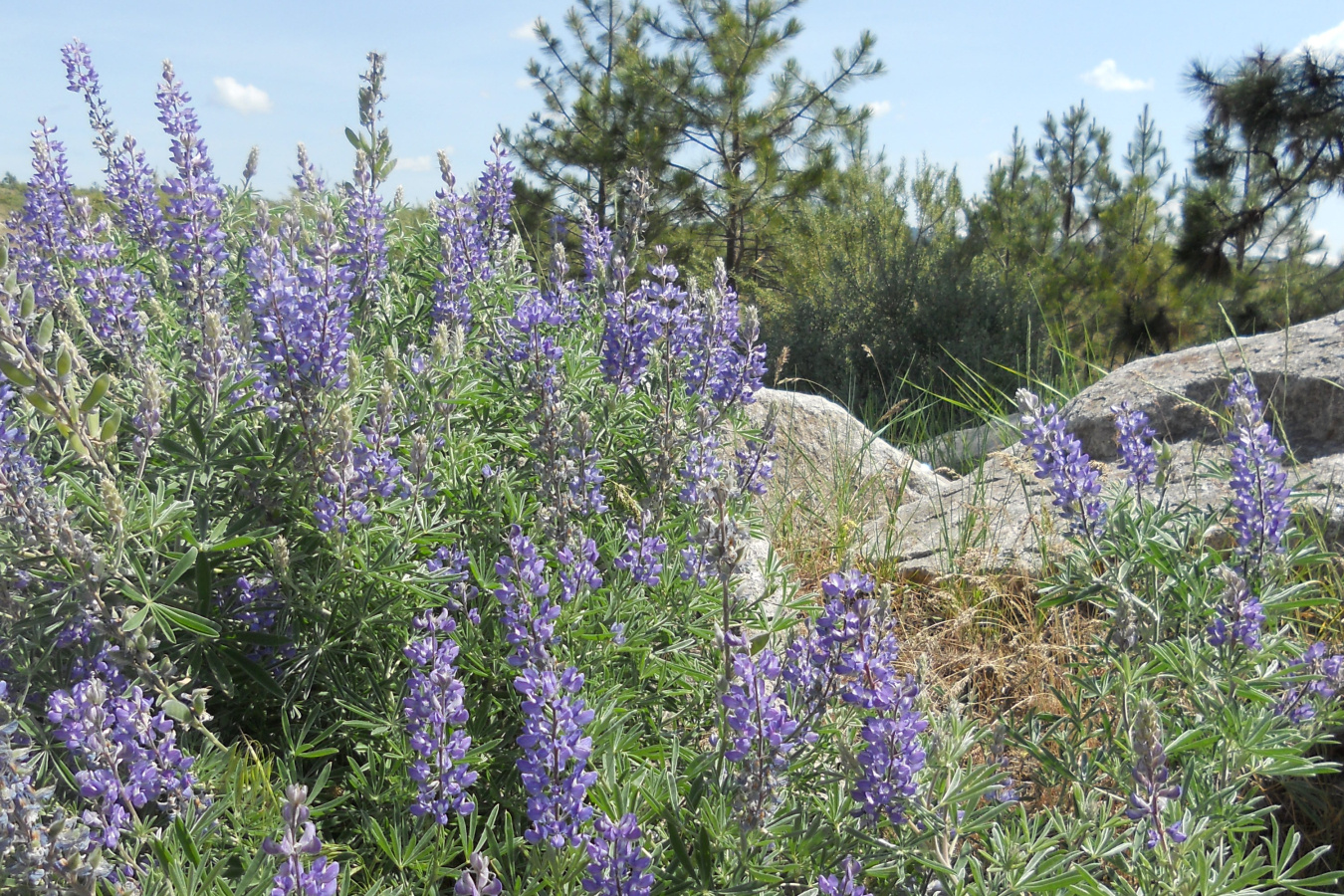
Sherwood, Washington, Disposal Site.
We also work closely with the State and Tribal Government Working Group (STGWG), part of the National Conference of State Legislatures. Made up of states and Native American tribes, STGWG engages directly with DOE on issues related to the cleanup of the nuclear weapons complex. STGWG representatives provide recommendations to ensure that operation and cleanup activities are in compliance with all federal and state laws and regulations and tribal rights, including those retained by treaty, conferred by statute, and protected by the federal trust responsibility. STGWG'S Closure for the Seventh Generation, 2017 Edition report provides updated information on long-term stewardship activities across DOE sites.
